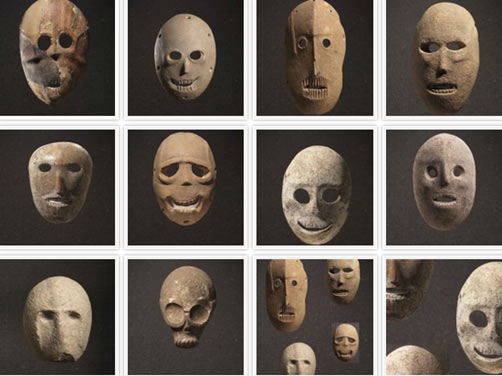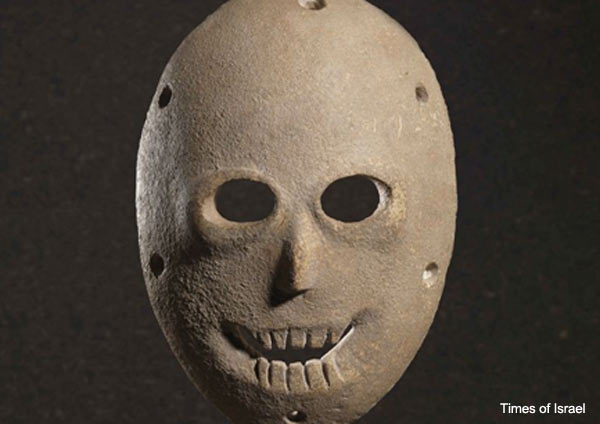Incredible collection of Neolithic spirit masks revealed for the first time
More than 10,000 years ago, ancient people living in the Judean Desert and Hills abandoned their nomadic lifestyles and established permanent settlements. Around this time, art, culture, and religious belief began to flourish, reflected in part by the creation of facial masks carved out of limestone and painted with colourful pigments. A collection of these masks will go on display to the public for the first time in the exhibition, ‘Face to Face: The Oldest Masks in the World’.
The masks were found in the Judean Desert and Hills in an area of approximately 50 kilometres in radius. Some of the masks were found by Israeli archaeologists Ofer Bar Yosef during excavations at the Nahal Hemar cave in 1983. The cave, perched in the limestone cliffs above the shores of the Dead Sea, yielded a cache of Neolithic artefacts at least 9,000 years old which included baskets, beads and the world’s oldest known glue and masks. Another was found at Horvat Duma, a site in the Judean Hills near Hebron.
Weighing in at one or two kilograms apiece, each of the masks depicts a face with unique characteristics – some appear old, others appear young – but they all contain cavities for the eyes, mouths with teeth or grins, and a set of holes along the outer edge, which may have been used to attach the mast to the face with string. One of the masks still contains remnants of pigments, which suggests that the masks were originally painted. The varied features of the masks suggest that they may have represented specific individuals.

The collection of Neolithic masks showing unique individual characteristic. Photo credit: Ilan Ben Zion/Times of Israel
Because the masks predate writing by at least 3,500 years, there is no record of their usage. Based on years of attribute analysis of their iconography, however, Dr Debby Hershman, curator of prehistoric cultures at the Israel Museum, believes that the carved limestone masks were used as part of an ancestor cult, and that shamans or tribal chiefs wore the masks during a ritual masquerade honouring the deceased.
“It is important to say that these are not living people, these are spirits,” said Dr Hershman, who was reluctant to place a mask from the exhibit over her face out of reverence for bygone traditions. “They are the first glimmerings of existential reflection,” added James Snyder, the museum’s director.
Over the course of a decade, Hershman and her colleague, Professor Yuval Goren, an expert in comparative microarchaeology from Tel Aviv University, teamed up to assemble the masks for the first time and analyse their origins and significance.
In total, twelve Neolithic masks dating back 9,000 years will go on display at the Israel Museum in Jerusalem in celebration of the Jewish holiday of Purim, which is traditionally celebrated with masquerade.
Featured image: One of the masks that will go on display. Photo credit: Ilan Ben Zion/Times of Israel



















